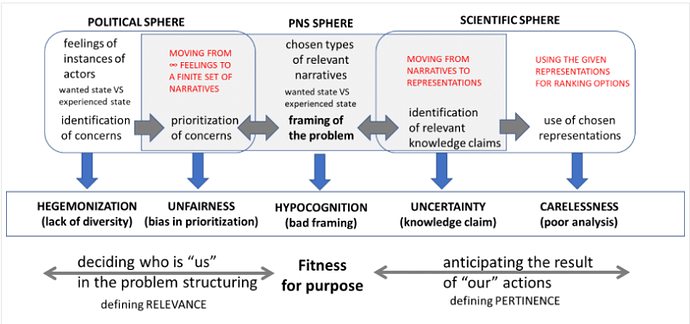Making quantitative models of (eco)systems more understandable may be helped through quantitative storytelling. An EU-funded report builds on the quantitative Multi-Scale Integrated Analysis of Societal and Ecosystem Metabolism (MuSIASEM).
Quantitative storytelling is a novel approach that involves a predominantly quantitative exploration of multiple narratives in a given policy domain. Rather than trying to compile evidence in support of a given narrative or determine a ‘best course of action’, quantitative storytelling operates ‘via negativa’; it tests whether the examined narratives are incongruent with quantitative analytical checks. The theoretical foundation of quantitative storytelling is the approach of post-normal science, which explicitly acknowledges the unavoidable presence of scientific uncertainty and value plurality in the sustainability discussion (Funtowicz et al., 1998; Funtowicz and Ravetz, 1990). Post-normal science was developed in response to ‘wicked problems’ (Rittel and Webber, 1973) originating from societal concerns or policy issues for which a variety of legitimate and often contrasting perceptions about the ‘truth’ of knowledge claims co-exist, thus creating irreducible uncertainty, even ignorance, about both the problem and the solutions. Post-normal science shifts the focus of quality control from the scientific information itself to the decision-making process and advocates the involvement of an extended peer community to check the quality of the narratives used to frame the problem. The term quantitative storytelling was first proposed in the MAGIC project proposal (Saltelli and Giampietro, 2017).
In MAGIC, the quantitative analysis supporting quantitative storytelling has been predominantly provided by the accounting method MuSIASEM, though other quantitative methods can, and have been used (e.g., deliverables D5.2, D5.3, D6.8). MuSIASEM is a semantically open accounting scheme based on the relational theory of science (here referred to asrelational analysis), purposely developed for addressing complex sustainability issues of social-ecological systems (SES). Its key feature is that it is capable of integrating quantitative data referring to different space-time scales and different dimensions of analysis. It is designed to identify and analyze patterns in the societal use of resources and the impacts this use creates on the environment. Various concrete tools have been developed during the course of MAGIC—together referred to as the MuSIASEM toolkit—whose use will be illustrated in this deliverable.
The concept of semantically open framework means that the MuSIASEM tool-kit must be tailored by the analyst to the sustainability problem at hand. During the course of the project, it quickly became evident that this is no easy task. For this reason, we devoted a substantial amount of time to developing a semantic interface between the analysts using the MuSIASEM toolkit and the users of the quantitative analysis in the cycle of quantitative storytelling.
(Warning: I have not read the full report. I’m posting this as a reminder to myself to do so. The authors are notable).
Source: Giampietro M, Cadillo Benalcazar JJ, Di Felice LJ, Manfroni M, Pérez Sánchez L, Renner A, Ripa M, Velasco Fernández R & Bukkens SGF (2020), Report on the Experience of Applications of the Nexus Structuring Space in Quantitative Storytelling . MAGIC (H2020–GA 689669) Project Deliverable 4.4, 30 August 2020.
As a further encouragement, there’s a shorter article that may whet interest.
Source: “The MAGIC-Post-Normal Science Nexus” | September 18, 2020 at https://magic-nexus.eu/content/magic-post-normal-science-nexus

